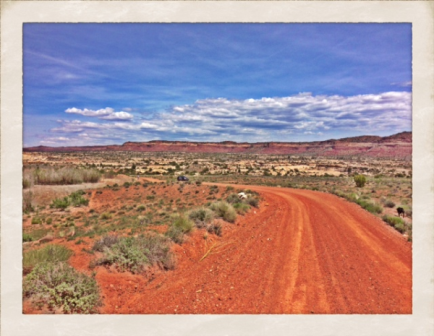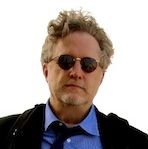Using the Profound Meditation Program to Move Closer to Our Source

I was talking to a client the other day, and he said, “I lost my signal because I’m so far away from my source.” He was talking about his Wi-Fi source. I said, “That’s really deep.” He said, “Yeah, it is.” And we both wrote it down.
If we lose our signal, our capacity to be in the flow, to be creative, and to feel our inner direction guiding us to what we’re supposed to be doing, it’s probably because we are too far away from our source. Most likely, we’ve got too many structures—too much stuff, too much trauma, too much avoidance—which we get for really logical, good reasons, but which are quite openly not helpful.
Maybe in the beginning when these conditions are created, they are useful as temporary survival mechanisms, which enable us to dissociate from the terror, and the pain, and put them in the closet of the unconscious, or push them away. This can be really good in the short term, like when we go into shock when we get hit by an object; as soldiers say, they get hit by a bullet, but they don’t feel it. They go into shock. It’s the body’s way of protecting us from the overwhelm of the moment. If we’re going to die, it’s usually not a painful process. We just go into shock and then pass on, as in the case of a combat injury, for example. But, when we start to feel the pain, that probably means we will be called to stay in the world.
I can’t emphasize enough how important our Profound Meditation practice is in helping us rid ourselves of the unnecessary structures that are preventing us from finding our way back closer to our source. For me, the practice of meditating with brain entrainment technology (and now also biofield technology) has facilitated a tremendous releasing process. It has facilitated me being able to see a lot of my unconscious stories about myself: I’m not smart enough; I’m not good enough; I don’t deserve anything that looks like success. I was able to see, “Wow, that’s kind of yucky!” and release the feelings that were giving rise to these particular stories.
I have been doing this type of meditation practice on a nearly daily basis going on eight years in September. When I miss a day, I do double time the next day, or time and a half for two days. I always make sure that I get seven hours of meditation in every week, and I probably get more like 40 hours in a month. From what I’ve seen in others, and especially in my own case, if we commit to sitting for an hour every day, working with the vast spaces, the brainwave states, and the openness that this technology facilitates, it really just changes everything. I don’t mean that we just experience happy sounds and walk around blissed out all the time. No. We experience everything more deeply; the pain and darkness comes on even stronger, because we’re more open to it. We no longer spend all of our time running from it, or trying to neurotically avoid it, numb it, project it, or somehow forget about it. Instead we are present with it.
Over time, we learn that the bigger the emotional charge that comes up, the bigger the release is going to be, and that it’s going to kick us to a whole new level—where exactly, we really don’t know. In other words, when transformation happens, and we move from one level to the next, from a more simple form to a more complex form (you can read about this in chaos theory and developmental psychology), we can’t predict what that’s going to look like. We may have a general idea, but we can’t know the specifics. When the change comes, it’s always amazing, and it’s always a blessing, but it’s also unique and surprising at the same time.
Right now, I’m in the middle of an Integral Recovery intensive, working and practicing with young men who are dealing with various issues. We show up every morning and do an hour of brainwave entrainment meditation together. Before hand, we do yoga, which is a really great idea, according to what I’ve learned and studied. Yoga was designed to prepare us for sitting in the stillness, where we begin to explore our own interiors and eventually, in the yogic tradition, find God and realize our own true nature—that Brahman is Atman and Atman is Brahman. In other words, our deepest human aspect, Atman, is no other than the causal intelligence that everything arises from, moment to moment.
Sometimes it’s nice to have intensives where we can practice with others, because it can be hard to get ourselves doing our practices in a disciplined way on our own. Right now, we’re in a groove: We do about two hours of meditation a day (an hour in the morning and 40 minutes to an hour in the evening). We work out together. We share. We do a lot of work, and it creates an energetic field. Maybe we should have more intensives like this for people who are not necessarily dealing with addiction or depression, but who just want to deepen their practice and their commitment to practice.
I would encourage any of you who want to do this kind of thing on your own to organize a meditation group. Pam and I have been hosting a meditation group for about 14 years now. We meet together on Sundays. The energetic field created by meditating in a group is really very powerful. One of the things we do after our Sunday morning meditation is check in with each other. During intensives, we also have a journaling session after the meditation, because people have a lot to write about since a lot of stuff comes up. Then we share and give each other feedback.
In any case, the Profound Meditation Program is an incredibly powerful tool and there are many ways you can use it. You could have salons, or meditation groups, or groups for people who are focused and working on any particular thing. If you were going to start a new company or had a new idea, you could get together your principals, put on your headphones, and sit there for an hour—then begin to jot down ideas. You’d be amazed at the brilliant and really unique and creative ideas that come up.
___________________________________________________________________________
Adapted from iAwake Technologies’ free, weekly teleconference call on April 10, 2013.
Join our weekly calls!
To receive information on how to join the weekly iAwake coaching calls that John leads, sign up for the free meditation download and you’ll be put on the email list. You can also access the phone-in information on our Teleseminar page.
___________________________________________________________________________
 John Dupuy is the CEO of iAwake Technologies and the founder of Integral Recovery, a holistic addiction treatment approach inspired by Ken Wilber’s Integral Model. As a pioneer in the use of brainwave entrainment in therapy and personal development, John has dedicated his life to helping others deepen their spiritual practice and transform their lives.
John Dupuy is the CEO of iAwake Technologies and the founder of Integral Recovery, a holistic addiction treatment approach inspired by Ken Wilber’s Integral Model. As a pioneer in the use of brainwave entrainment in therapy and personal development, John has dedicated his life to helping others deepen their spiritual practice and transform their lives.
___________________________________________________________________________
Leave a Comment
You must be logged in to post a comment.

Leave your comments below